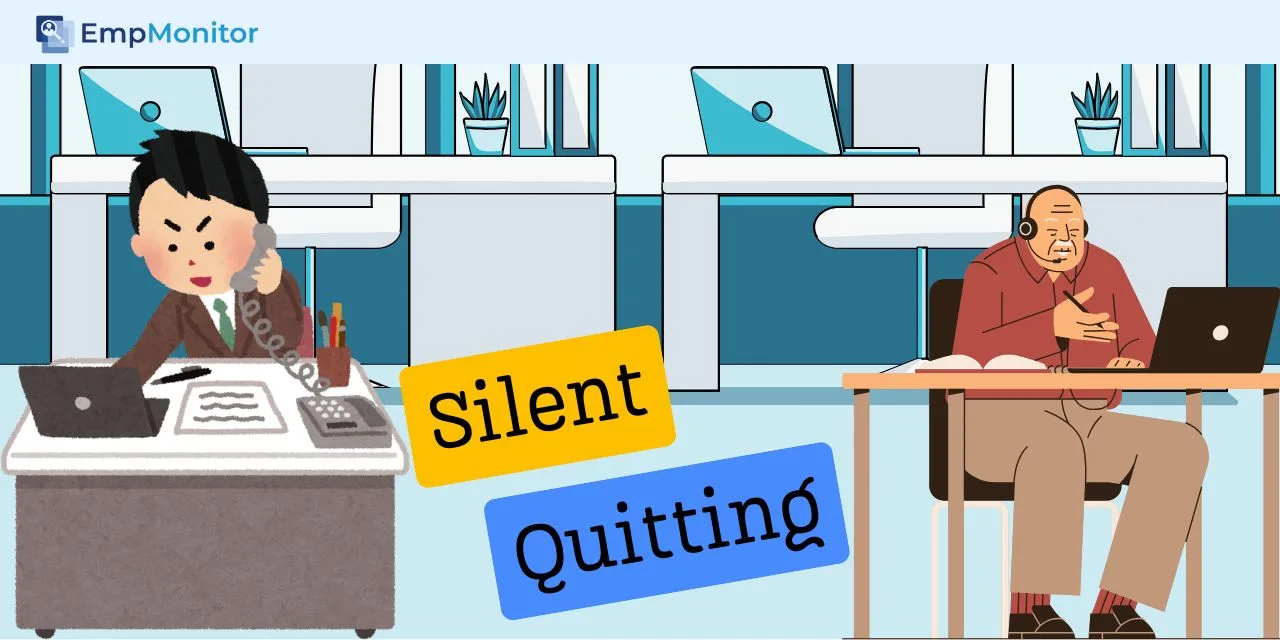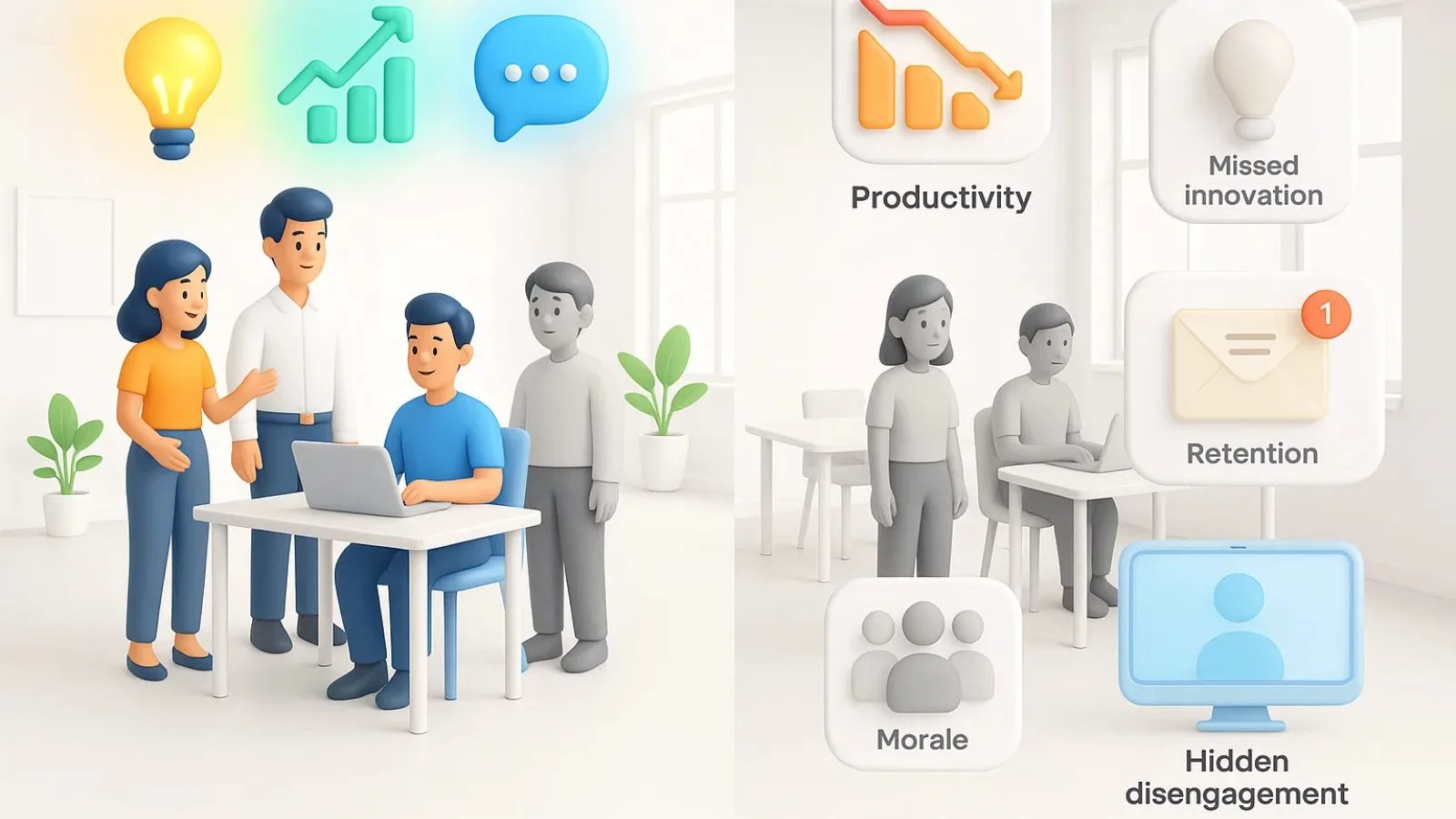In recent years, a subtle yet powerful phenomenon has been happening in workplaces around the world. Employees aren’t dramatically walking out the door. They’re staying but doing only what’s required, nothing more. This quiet change in behaviour has a name: silent quitting.
It is sometimes referred to as quiet quitting, although it has nothing to do with people quitting their positions. It is the process of checking out emotionally, but physically being present. Workers complete their tasks, clock their time, and keep the bare essentials going, but they often fail to go that extra mile.
Silent quitting is not a hype. It reveals how employees perceive their jobs, their demeanour, and how they are utilized. It teaches us something more profound about organizational culture, management, and how individuals approach their work daily.
The changing workplace, especially the new version of such being hybrid and remote working, necessitates the need to recognize and understand the concept of silent quitting. They are not only HR but also business problems. Firms that do not respond to this change will endanger the loss of talent, morale, and motivation.
Listen to our podcast here :
What Is Silent Quitting?
So, on a rather important side note: silent quitting does not imply that a person is quitting his or her job. They say it in the sense that they are already mentally checked out, but they are still present at work. They are merely doing their job as it is without any extended hours, additional tasks, or extra effort.
So, what is the meaning of silent quitting in the real sense? It is when an employee thinks that it is time to discontinue the over-commitment to an unappreciative, unrewarding, and difficult job. They do not slack, and they put limits. Frequently, it is a reaction to a burnout situation, or a lack of what is expected of one, or a feeling of not being respected.
When someone poses the question, What is silent quitting, then the answer tends to narrow down to a change of mindset. It is not being lazy. It concerns the preservation of mental health, exercising power, and refusing to submit to unpaid emotional labour.
Somewhere, you will also read about quiet quitting, which is the same thing. Regardless of what you term it, such a trend is becoming more prevalent, particularly within the workplace and among younger employees who appreciate more purpose as well as flexibility and being treated with fairness.
Why Silent Quitting Happens?
Silent quitting does not occur without any reason. It normally comes as a result of recurrent frustrations accumulated over a period. It is not a case where employees wake up one morning to decide to disengage; instead, they become withdrawn slowly when their support is not recognized, their opinion is not heard, or when they feel that they are treated like a number.
The following are some of the reasons it occurs most of the time:
- Lack Of Recognition:
With a lack of reward for hard work comes a lack of motivation. Workers desire to feel important about what they do. Adding a little appreciation and recognition can take you a long way, but when they cannot be found, then people begin to question why they should give more than is required.
- Burnout and Overwork
Tiredness from working long and unrealistic hours, and doing endless jobs, is bound to get to anyone. After some time, the employees will withdraw in a bid to safeguard themselves against burnout. Quiet quitting is a way of survival.
- Poor Management
Even the greatest job can become unbearable with the help of a bad manager. Frustrating environments are caused by micromanagement, communication or the absence thereof, and expectations. Under poor leadership, employees cease trying to impress.
- No Clear Growth Path
When workers are given no reason to believe that they have a future in your company, then why should they make exclusive efforts? No training, career development, or feedback? That is a formula of disengagement.
- Toxic Work Culture
Workplaces with rewards for overworking, disrespecting boundaries, or enduring injustice make individuals emotionally detach themselves much before they even consider stepping out.
Quiet protest is a part of silent quitting; it is a rebellion of some sort, saying, I have done my part. Now I will do it. Only what is fair.
The Impact on the Business
At face value, silent quitting may not appear to be a significant problem. Well, all the employee is doing is reporting to work and accomplishing his assignments. However, what can damage your business inside out is what can work slowly and in a noiseless manner.
- Lower Productivity
Once workers cease putting their best foot forward, then performance will decline. Persistence is lost, creativity suffers, and collaborations go to waste. What used to be done by one person per day has become a team of people that takes a week.
- Missed Opportunities
Mentally, our employees cannot offer ideas or boundaries. You miss out on innovation, problem resolution, and the type of ownership that embarks on growth.
3. Team Morale Drops
The disengagement of one member of the team is experienced by other members. It is perceived to create resentment, cause extra work for others, and also a loss of team energy and motivation in general.
- The risk of retention increases.
Silent quitting often precedes actual quitting. When nothing changes, these employees eventually get resigned, either passively or abruptly. And substitutes for talent are costly.
- More hidden in distributed teams
Disengagement may be more difficult to notice in a hybrid or fully remote setting. Leaders may fail to notice it until it is too late unless they have the proper tools at their disposal, such as employee management software or pulse surveys.
The greatest risk associated with silent quitting is that it is a silent killer lurking in the open. It is pricey, though not very noisy. And it is contagious when left untreated.
Signs An Employee Might Be Silently Quitting.
As I said, one of the worst things about silent quitting is that it is silent. It has no official resignations, no loud fights, no straight declarations. However, you can identify employee burnout sign by listening carefully, you can detect some of the indicators that someone is emotionally absent.
- They Stop Volunteering or Speaking Up
An employee who used to be active when it comes to ideas, questioning, and initiating action becomes quiet during the company’s meetings and becomes a doer only.
- A Drop in Engagement
You may realise that they no longer attend optional team meetings or activities, social events, and even short conversations on Slack. Only when they are necessary do they participate.
- Minimal Work Output
They punctuate the deadlines and do not do it ahead of time. They do only what they are supposed to do. They no longer have passion in their delivery.
- Delayed Communication
Slow in responding to emails or messages. They do not follow up, and they do not want to do proactive checking.
- Shift in Attitude
Negativity can be described by the shift in tone, not so optimistic, not so enthusiastic, perhaps even cynical. They might cease mentioning future objectives or self-improvement.
In such a scenario, monitoring employee activities may help the management to discover such issues. However, it won’t be easy for management to identify and address them without a structured approach. Subtle signs of disengagement often go unnoticed in day-to-day operations, especially when an employee continues to meet basic expectations.
By leveraging employee monitoring tools that track productivity trends, communication patterns, and behavioural shifts, organizations can gain early insights into silent quitting. This allows leaders to intervene with timely support, initiate meaningful conversations, and re-engage employees before the situation escalates into turnover or deeper dissatisfaction.
What Employers Can Do About It?
The good news is? Silent quitting is not a dead end; it is a light. Indeed, provided that leaders care to listen, they can take clear steps to reverse the situation.
- Open Up Honest Communication
The initial step is to establish an environment in which workers do not fear expressing their true feelings. Frequent check-ins, pulse surveys, and open discussions may help understand what goes well and what does not.
- Set Clear, Fair Expectations
Employees lack information on what is expected, and hence, it is easy to lose interest. Ensure that job tasks, targets, and workloads are reasonable and must be well communicated.
- Show Appreciation
Human beings desire to be noticed. Acknowledge excellent effort- both in a public and behind-the-scenes way. Trust can be restored with a simple thank-you or shout-out and motivation added to it.
- Provide Growth Opportunities
When there is no way of moving on, workers will give up at some point. Provide training, mentorship, and in-house mobility. Make them feel that they are important beyond whatever they are doing.
- Support Work-Life Balance
Learn to avoid encouraging overwork. The best approach is to encourage people to take breaks, use vacation time, and avoid crossing boundaries. A balanced diet ensures that a person does not get burned out and stays engaged in the long run.
- Train Your Managers
And the bulk of the engagement issues turn out to be management issues. Practice in developing leaders to ensure that managers learn how to lead rather than delegate.
The first step to silent quitting would be empathy. It is not about making people work harder; it is about making people work better.
Tools That Can Help You Stay Proactive
Although individuals are the driving force of culture, there are the right tools that can assist you in detecting disengagement in good time and act before it becomes silent quitting. You do not have to micromanage, but you must have a sense of what is happening with your team.
Attendance Monitoring
With EmpMonitor, tracking attendance monitoring goes beyond simple check-ins. It monitors work hours, idle time, and presence patterns to help teams stay on track and avoid burnout. This data also helps identify absenteeism trends and silent disengagement before they affect productivity.
Performance Monitoring
EmpMonitor offers real-time insights into employee productivity levels, helping managers recognize when performance dips significantly. Instead of using this data for punishment, it enables meaningful check-ins like “Is everything okay?”, turning monitoring into support.
More than just a monitoring tool, EmpMonitor supports employee development by integrating performance tracking, goal progress, and work patterns. It ensures that every team member stays seen, heard, and engaged, preventing talent from falling through the cracks.
And there’s more. EmpMonitor is packed with features designed to streamline workforce management even further. From automated screenshots and detailed productivity reports to app and website usage tracking, it gives you complete visibility into team activities. You can also manage shift schedules, generate insightful reports, and even detect insider threats, making EmpMonitor an all-in-one solution for smarter, more ethical employee management.
How To Build A Culture That Prevents Silent Quitting?
There is no better way of handling silent quitting than by preventing it from occurring, and a sure means of doing this is by ensuring that the culture that allows its occurrence does not occur. Once individuals are made to feel cared about and listened to, they remain connected.
This is what businesses can begin doing to develop such an environment:
- Encourage Healthy Boundaries
No, it is okay when it comes to employees turned down by the boss on some additional tasks. It is a positive indicator that they are in a haven, to be truthful. Observing working hours, restricting the after-hours requests, being a role model, and developing trust.
- Promote Work-Life Balance
Make rest and recovery an aspect of productivity. Make breaks a norm. Glory in vacation time rather than in long hours. Human beings perform optimally when they are not out of fuel.
- Involve Employees in Decisions
Human beings become involved when they believe that they have a contribution. Seek responses before introducing new policies or tools. Kick the environment by letting employees co-create the environment they participate.
- Be Transparent
Leadership that is transparent in terms of goals, objectives, and company direction brings about confidence. Employees will tend to remain engaged when they understand the way their work aligns with the larger scheme of things.
- Show That You Care
The big things are made up of little things. A check-in wondering, How are you doing, really?, is stronger than a policy. When employees feel that they are well taken care of rather than being controlled, they will tend to give their best.
The thing is that preventing silent quitting does not mean requiring more, as it is about establishing an environment in which individuals would have an urge to do more.
Read More
How To Identify & Effortlessly Solve Your Overworked Employees Workloads In 2025?
7 Minute Employee Burnout Signs You Might Be Overlooking
Final Thoughts.
The practice of silent quitting is not only a trend in the workplace but also a way to express the feelings of employees when they are overstretched, devalued, or disconnected. It is not a laziness issue. It is a matter of self-preservation.
This is an awakening moment for businesses. Smart leaders, instead of punishing disengagement, enquire as to why it is happening. It is an opportunity they employ to listen, reflect, and reconstruct. Since when have individuals been respected and provided purpose, all backed by the right tools and culture, so that they do not simply remain in their positions? They thrive.
Eventually, the solution to silent quitting must include people doing more. It is about building an employee experience that the employee is interested in.
FAQs
Q1. Is silent quitting the same as being lazy?
No, silent quitting is about setting boundaries and protecting mental well-being, not about laziness or a poor work ethic.
Q2. How can employers spot silent quitting early?
Watch for changes in engagement, reduced communication, and minimal effort. Tools like EmpMonitor can help detect these trends early.
Q3. Can silent quitting be reversed?
Yes, with honest communication, recognition, and support for growth and balance, employees can re-engage meaningfully.















